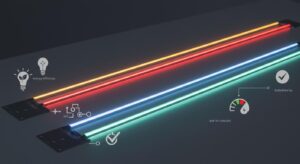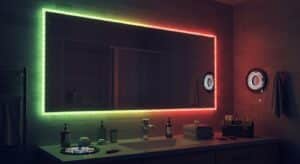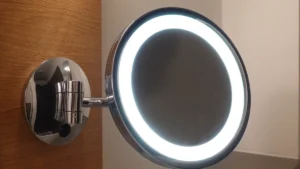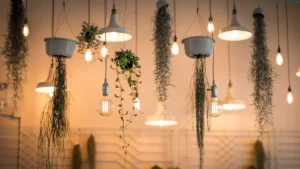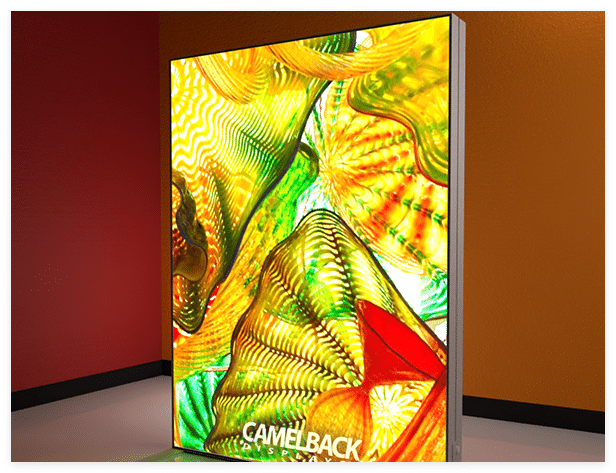
When planning lighting projects, picking the right LED strips matters. Rigid strip lights are strong and very accurate. They work well for fixed setups. Flexible LED strips bend easily around curves and corners. Think about your project’s needs to match the lighting to the space and design. Whether you want something strong or more creative, the right LED strip can make your project look amazing.
Key Takeaways
Think about your project’s needs when picking LED strips. Rigid strips are tough and good for fixed setups. Flexible strips work well for creative designs and curved areas.
Rigid LED strips give bright, even light and are strong. They are great for workspaces and outdoor spots. Use them for tasks needing strength and precision.
Flexible LED strips are simple to set up and can bend. They fit unique shapes and are perfect for decorative lighting. They also save energy, making them great for home use.
Always check the power supply for your LED strips. Make sure it matches the strip’s length and power needs. This keeps the lighting steady.
Taking care of LED strips is important. Keep them clean and check connections. This helps them work well and last longer.
Understanding LED Strip Lights
What are LED strip lights?
LED strip lights are a handy and energy-saving way to light spaces. These strips have many small LED lights attached to a thin circuit board. They are compact and can bend easily. They use low-voltage DC power and shine brightly, measured in lumens per foot. Good-quality strips give at least 450 lumens per foot. You can choose from many colours and brightness levels, making them great for decoration or practical lighting.
Tip: LED strip lights usually come in rolls up to 16 feet long. You can cut them to fit your space. Many have sticky tape on the back, making them simple to install.
Here’s a summary of their main features:
Feature | Details |
|---|---|
Structure | Made of many small LED lights on a thin, bendable circuit board. |
Power | Runs on low-voltage DC electricity. |
Brightness | Measured in lumens per foot; good strips give 450 lumens or more per foot. |
Design Choices | Available in fixed or adjustable colours and brightness levels. |
Length and Installation | Comes in long rolls (about 16 feet), can be cut, and has sticky tape for easy setup. |
LED Count | Usually 18-36 LEDs per foot, affecting how evenly the light spreads. |
Colour Options | Comes in different white shades and colours; colour temperature and CRI show quality. |
Rigid strip light vs flexible LED strip: An introduction
Choosing between rigid and flexible LED strips depends on your needs. Rigid strips are tough and strong, making them great for factories or outdoor areas. Flexible strips are cheaper and can bend, so they’re ideal for homes or decorations.
Here’s a comparison of their features and uses:
Type of LED Strip | Features | Uses |
|---|---|---|
Rigid LED Strips | Tough, strong | Factories, cars, work lighting |
Flexible LED Strips | Bendable, cheap | Homes, decorations |
Rigid strips are best for places needing strength, like factories or cars.
Flexible strips are great for curved surfaces and creative designs, perfect for home projects.
Both types are useful, but pick based on what your project needs.
Comparing Rigid and Flexible LED Strips
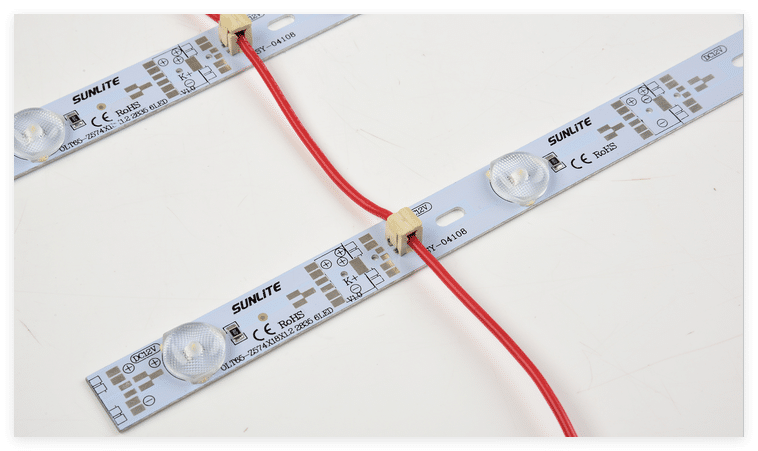
Material and design differences
When picking between rigid and flexible LED strips, their build matters. Rigid strips, also called LED rigid bars, use strong materials like aluminium or steel. These materials make them tough and long-lasting in harsh places. They also shine brighter per length, great for task or accent lighting. But, their solid build makes them hard to fit on uneven surfaces.
Flexible LED strips, however, are made with bendable circuits. This lets you easily place them on curved or bumpy areas. You can also cut them to fit your space perfectly. But, being flexible means they are less sturdy. They might wear out faster if bent often. If your project needs frequent changes, they may not last as long as rigid strips.
Tip: Use rigid strips for tough projects needing durability. Choose flexible strips for creative designs or curved spaces.
Installation process comparison
Setting up rigid and flexible LED strips is quite different. Rigid strips need brackets or screws to stay in place. This takes more time but gives a stable and secure setup. They are great for precise tasks like under-cabinet or industrial lighting.
Flexible strips are much simpler to install. Most have sticky backs, so you can just stick them on. This makes them perfect for quick DIY projects or temporary setups. But, the adhesive might not stick well on rough surfaces. You may need extra support to keep them steady.
Note: Rigid strips take more effort to install but last longer. Flexible strips are best for quick and easy setups.
Flexibility and adaptability
Flexible LED strips are very bendy. You can wrap them around corners, fit them in tight spots, or make cool patterns. This makes them great for decorating mirrors, shelves, or furniture. You can be creative without limits.
Rigid strips are not as flexible. Their solid shape works best for straight lines or flat areas. They don’t allow much creativity but give steady light and alignment. This makes them ideal for workbenches, displays, or car lighting.
Callout: For curves or unique shapes, pick flexible strips. For straight, even lighting, rigid strips work better.
Advantages and Disadvantages of Rigid LED Strips
Benefits of rigid LED strips
Rigid LED strips have many good points for lighting projects. They are very bright, making them great for workspaces or displays. Their strong build, often using aluminium or steel, makes them tough and long-lasting.
A key feature is their ability to handle heat well. This helps them work better and last longer, saving money over time. They also give even light across their length, which is useful for precise tasks like museum displays or commercial lighting.
Another advantage is their colour quality. With a high colour rendering index (CRI), they show colours clearly and accurately. This is perfect for places like art galleries or shops where colours matter a lot.
Tip: Choose rigid LED strips if you need strong, reliable lighting.
Limitations of rigid LED strips
Rigid LED strips do have some downsides. They cost more than flexible strips, which might not suit tight budgets. Their solid design means they can’t bend, so they don’t work well on curved or uneven surfaces.
Installing them can also take more effort. You’ll need brackets or screws to fix them in place. This makes them less convenient than flexible strips with sticky backs, especially for quick or temporary setups.
Advantages | Disadvantages |
|---|---|
Very bright | Costs more |
Handles heat well | Can’t bend |
Even light spread | |
Shows colours clearly |
Note: Rigid LED strips are strong and perform well but aren’t flexible. Think about your project needs before choosing.
Advantages and Disadvantages of Flexible LED Strips
Benefits of flexible LED strips
Flexible LED strips have many good points for lighting projects. They can bend and twist to fit almost any shape. Use them on curved walls, furniture, or tight corners. This makes them perfect for creative and unique designs.
They are also very versatile. You can use them for decoration or bright task lighting. Add a soft glow to your room or light up your kitchen. Many strips let you change colours and brightness. This gives you full control over how your space looks.
Installing flexible LED strips is simple. Most have sticky backs, so you can just stick them on. You don’t need special tools or help to set them up. You can also cut them to the size you need. For outdoor use, some strips resist water and weather.
These strips save energy and last a long time. They use less power but still shine brightly. This helps lower your electricity bills. High-quality strips show colours clearly, making them great for places where colour matters.
Tip: Choose flexible LED strips for projects needing creativity and easy setup.
Limitations of flexible LED strips
Flexible LED strips also have some downsides to think about. Their bendy design makes them less strong than rigid strips. Bending them too much can cause damage over time.
Some features can be tricky to use. Colour-changing or syncing effects may need programming skills. This can make them harder for beginners to handle.
They also need a good power supply to work well. Long strips may flicker or dim without enough power. Managing power is important for even and steady lighting.
Cost is another thing to consider. Basic strips are cheap, but advanced ones cost more. If one part breaks, the whole strip might stop working. Fixing or replacing it can be costly.
Note: Flexible LED strips are great for creative ideas but not for heavy-duty tasks.
Applications of Rigid and Flexible LED Strips
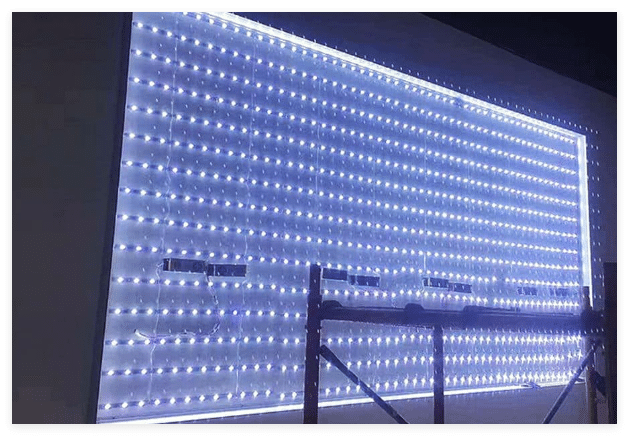
Best uses for rigid LED strips
Rigid LED strips are great for places needing strong and bright lights. Use them in shops, factories, or display areas. Their tough design handles rough conditions and gives steady lighting. They are perfect for jobs needing accuracy, like lighting under kitchen cabinets or garage workbenches.
In business spaces, rigid LED strips shine very brightly. They can give up to 8000 lumens per metre (2400 lumens per foot). This makes them ideal for lighting big areas like warehouses or showrooms.
Application Type | Recommended Brightness (lumens per metre) |
|---|---|
General Lighting | Up to 8000 lumens per metre (2400 lm/foot) |
Rigid strips are also useful for car lighting. Their strong build makes them reliable for car interiors or outside highlights. They are a solid choice for vehicle lighting needs.
Tip: Pick rigid LED strips for projects needing strength and bright light.
Best uses for flexible LED strips
Flexible LED strips are ideal for creative and decorative lighting. Their bendy design fits curved surfaces, tight spaces, or fancy patterns. Use them to add soft light to mirrors, shelves, or furniture. They work well for accent lighting in living rooms, bedrooms, or outdoor areas.
Flexible LED strips save energy and light spaces evenly. They are better than old-style lights and are eco-friendly. While older lights give a cosy feel, flexible strips mix energy-saving with modern design options.
These strips are also popular for events. Use them to make fun effects for parties, weddings, or stage shows. Many flexible LED strips let you change colours and brightness. This helps you set the mood just right.
Callout: Flexible LED strips are perfect for creative ideas and saving energy.
Choosing the Right LED Strip for Your Project
Checking your project needs
Before picking an LED strip, think about your project’s needs. First, check the technical details of the LED strip. Decide if it’s for indoor or outdoor use. Outdoor projects need waterproof strips that can handle bad weather. If your project has curves or tight spots, pick flexible strips that can bend easily.
Make sure the strip works with your setup. Check if the connectors and materials match your design. Strong connectors are important for long-lasting use, especially in tough conditions. By thinking about these points, you can choose a strip that works well and looks great.
Tip: Match the LED strip’s features to your project’s space and style.
Thinking about your budget
Your budget is important when choosing an LED strip. Rigid strips cost more because they are stronger and brighter. Flexible strips are cheaper and good for creative designs. But don’t just look at the price. Think about how long the strip will last. Good-quality strips may cost more now but save money later by lasting longer.
If money is tight, focus on what you really need. Pick strips with the right brightness and colours without extra features. For big projects, buying in bulk can save money. Balancing cost and quality helps you get the best results without spending too much.
Callout: Spending more on durable LED strips can save money over time.
Durability and design choices
Durability and design are key when picking LED strips. Rigid strips, made from strong materials like aluminium, are great for tough places. Flexible strips are less strong but perfect for creative designs. Choose based on what your project needs.
Tests like IES LM80 and IES TM21 check how long LED strips stay bright. These tests make sure the strips last and work well. For example:
Testing Standard | Purpose | Duration | Maximum Life Quoted |
|---|---|---|---|
IES LM80 | Checks brightness over time | 6000-10,000 hours | N/A |
IES TM21 | Predicts long-term brightness | Uses LM80 data | 6x test duration |
Design is also important. Flexible strips let you make cool shapes and patterns. Rigid strips are better for straight lines and steady lighting. By balancing strength and style, you can create a project that works well and looks amazing.
Note: Pick LED strips that fit your project’s strength and style needs.
Expert Tips for Choosing and Installing LED Strips
Checking the installation area
Before installing LED strips, look closely at the area. Check if the surface is smooth or rough. Smooth surfaces are best for sticky-backed strips. Rough areas might need extra support like brackets. Measure the space to make sure the strips fit well without gaps. Flexible LED strips work best for curved or tight spaces because they can bend easily.
Think about the lighting purpose of the area. Rigid LED strips are great for focused light, like for tasks. Flexible strips are better for decoration. Make sure the space has good airflow to stop the strips from overheating, especially if they are very bright.
Tip: Clean the surface before sticking the strips. This helps the adhesive hold better and last longer.
Picking the right power supply
The power supply is very important for LED strips to work well. Match the power supply to the strip’s length and power needs. For example:
LED Strip Length | Suggested Power Supply |
|---|---|
5 feet | 60W |
10 feet | 100W |
15 feet | 150W |
Use the 80% rule. This means the power supply should handle 80% of its full load. This keeps it working well and lasting longer. Look for power supplies with features to stop overheating. This helps the lights stay bright and steady.
Choose a good-quality power supply, even if it costs more. A strong power supply keeps the lights steady and protects them from damage.
Callout: Buy a power supply with safety features like surge protection for better reliability.
Keeping LED strips in good shape
Take care of your LED strips to keep them working well. Check them often for dust or dirt. Clean them gently with a soft cloth to keep them bright.
Look at the connectors and wires to make sure they are tight. Loose wires can cause flickering or stop the lights from working. For outdoor strips, check that they are still waterproof to avoid damage from water.
Don’t bend flexible strips too much, as this can break them. For rigid strips, make sure they stay firmly in place to avoid misalignment.
Note: Replace broken parts quickly to keep the lighting even and avoid more problems.
Picking between rigid and flexible LED strips depends on what your project needs. Rigid strips are strong and accurate, great for workspaces or factories. Flexible strips bend easily, making them perfect for decorations or curved areas.
Tip: Consider your space, money, and design ideas before choosing.
Think about what your project requires to make the best choice. The right strip will not only work well but also improve how your lighting looks and feels.
FAQ
How can I cut LED strips to fit my space?
Cut the strip carefully using sharp scissors. Only cut at the marked lines. Do not cut through the LEDs or circuit board. This keeps the strip working and fits your space well.
Can LED strips be used outside?
Yes, but pick waterproof LED strips with an IP65 rating or higher. These strips can handle rain and weather. They are great for gardens, patios, or outdoor parties.
How can I stop LED strips from overheating?
Make sure air can flow around the strips. Use a power supply with enough wattage. Don’t put strips in closed spaces without ventilation. This helps them stay bright and last longer.
Are flexible LED strips safe for kids’ rooms?
Yes! Flexible LED strips are safe and save energy. Choose ones with soft, dimmable light for a cosy feel. Hide wires and connectors properly to keep kids safe.
Can I control LED strips with my phone?
Yes, many LED strips work with Wi-Fi or Bluetooth. Download the app from the maker to change colours, brightness, and effects on your phone.
See Also
A Comparison of Flexible Versus Rigid LED Strips
Selecting Between 2835, 3528, and 5050 LED Strips
Choosing The Ideal LED Strip Lights For Linear Lighting
